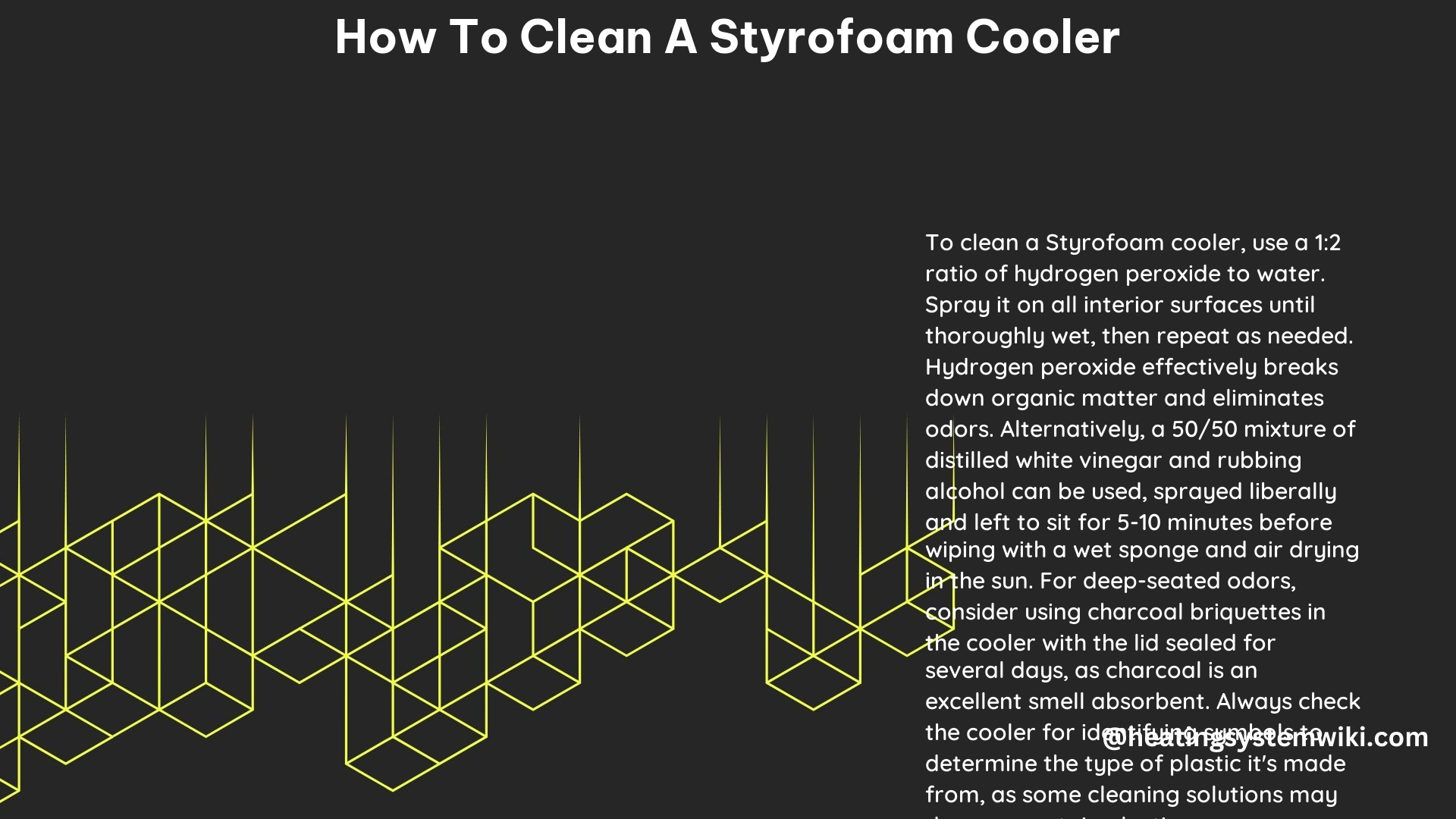Styrofoam coolers are a popular choice for outdoor activities, picnics, and food storage due to their lightweight, durable, and insulating properties. However, these coolers can accumulate dirt, grime, and odors over time, which can compromise their performance and hygiene. In this comprehensive guide, we’ll explore the step-by-step process of cleaning a Styrofoam cooler, along with detailed technical specifications and measurements to ensure a thorough and effective cleaning.
Preparing the Cleaning Solution
To clean a Styrofoam cooler, you’ll need to create a gentle cleaning solution. Mix a few drops of mild dish soap with warm water in a clean bucket or sink. For added cleaning power, you can also add a tablespoon of baking soda to the solution. Baking soda is a natural abrasive that can help remove stubborn stains and odors without damaging the Styrofoam surface.
Removing Debris and Food Particles

Begin by removing any visible debris or food particles from the cooler’s interior and exterior. Use a soft-bristled brush or a clean, damp cloth to gently wipe away any loose dirt or crumbs. Be careful not to scrub too hard, as this can damage the Styrofoam surface.
Cleaning the Cooler’s Interior
Dip a clean, soft-bristled sponge or cloth into the prepared cleaning solution, making sure it’s not dripping wet. Gently wipe down the interior walls, corners, and any removable parts of the cooler, such as the lid or shelves. Pay special attention to areas where food or liquid may have spilled, as these can be breeding grounds for bacteria and odors.
Cooler Size and Thickness Considerations
The size and thickness of the Styrofoam cooler can vary significantly, affecting the cleaning process. Smaller lunch-box-sized coolers may have a wall thickness of around 1/2 inch, while larger coolers designed for camping or tailgating can have walls up to 1 inch thick or more. Adjust the amount of cleaning solution and the pressure you apply when wiping the interior based on the cooler’s size and wall thickness to avoid damaging the Styrofoam.
Rinsing and Drying the Cooler
Once you’ve thoroughly cleaned the interior, rinse the cooler with clean water to remove any remaining soap or baking soda residue. Use a clean, damp cloth to wipe down the interior, ensuring no moisture is left behind.
To dry the cooler, you can either use a clean, absorbent towel or leave it to air dry in a well-ventilated area. Avoid exposing the Styrofoam to direct sunlight, as this can cause the material to become brittle and potentially crack over time.
Deodorizing the Cooler
If your Styrofoam cooler has a persistent odor, you can try a more potent cleaning solution to eliminate the smell. Mix equal parts white vinegar and water in a spray bottle, and mist the interior of the cooler. Allow the solution to sit for a few minutes before wiping it down with a damp cloth. Alternatively, you can use a mixture of hydrogen peroxide and water for a more powerful disinfecting and deodorizing effect.
Cleaning Styrofoam Incubators
When cleaning a Styrofoam incubator, the process is similar, but you’ll need to be more cautious when dealing with any electrical components or heating elements. Consult the manufacturer’s instructions or seek advice from experienced hobbyists to ensure you clean the incubator safely and effectively without damaging its functionality.
Maintaining Styrofoam Coolers
To keep your Styrofoam cooler in top condition, it’s essential to clean it regularly, especially after each use. Prompt cleaning can help prevent the buildup of odors, stains, and bacterial growth, ensuring your cooler remains hygienic and efficient.
Additionally, be mindful of the cooler’s handling and storage. Styrofoam is a relatively fragile material, and the cooler can crack or break if dropped or subjected to heavy impacts. Store the cooler in a cool, dry place, and avoid exposing it to direct sunlight or extreme temperatures, as this can compromise the Styrofoam’s insulating properties over time.
By following these comprehensive guidelines, you can effectively clean and maintain your Styrofoam cooler, ensuring it continues to serve you well for your outdoor adventures, picnics, and food storage needs.
References:
- FineScale Modeler forum: https://cs.finescale.com/fsm/modeling_subjects/f/19/t/92018.aspx
- Reddit post: https://www.reddit.com/r/NoStupidQuestions/comments/9bkmvi/i_accidentally_left_food_in_our_cooler_after_a/
- Beemaster forum: https://beemaster.com/forum/index.php?topic=26419.0
